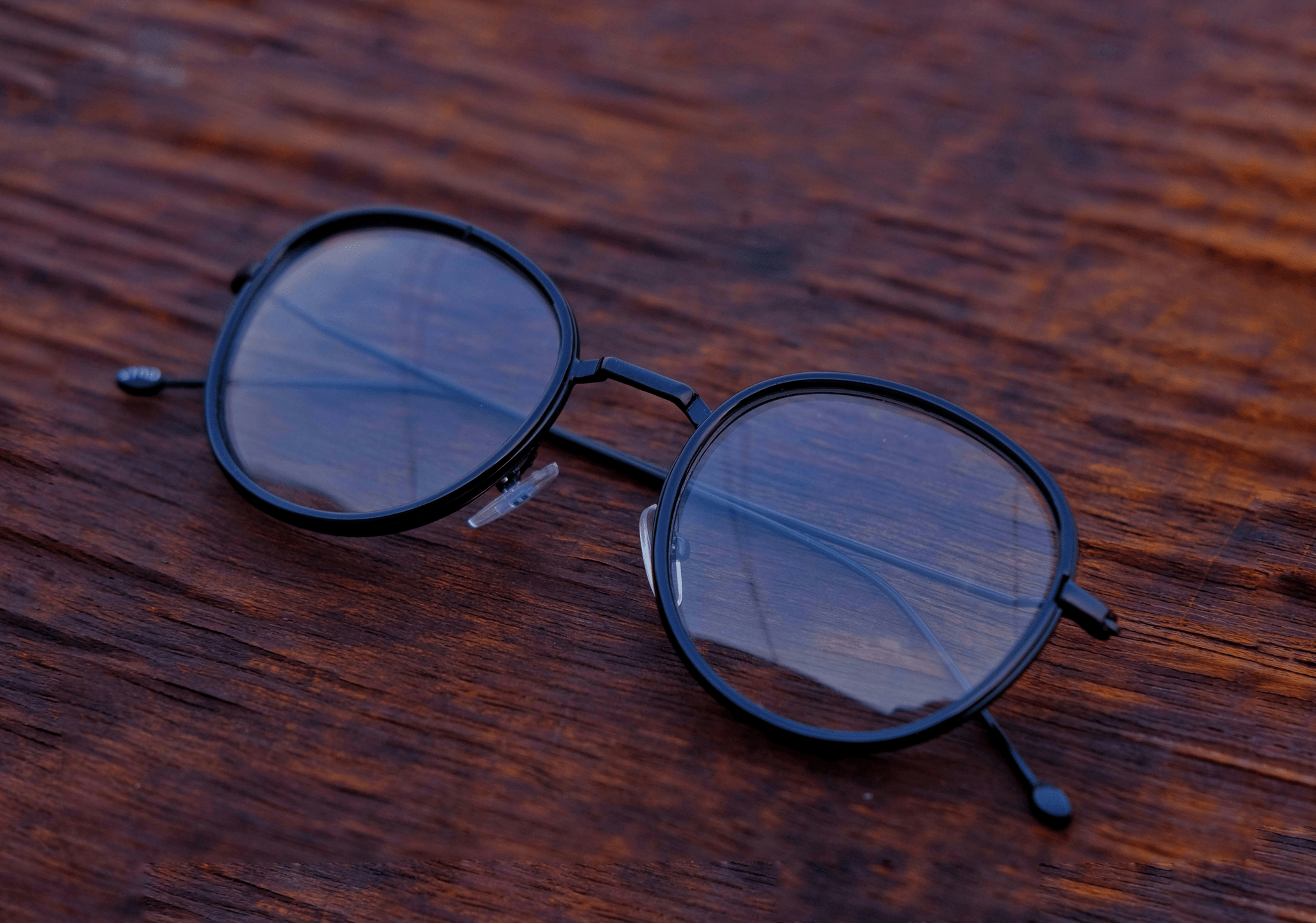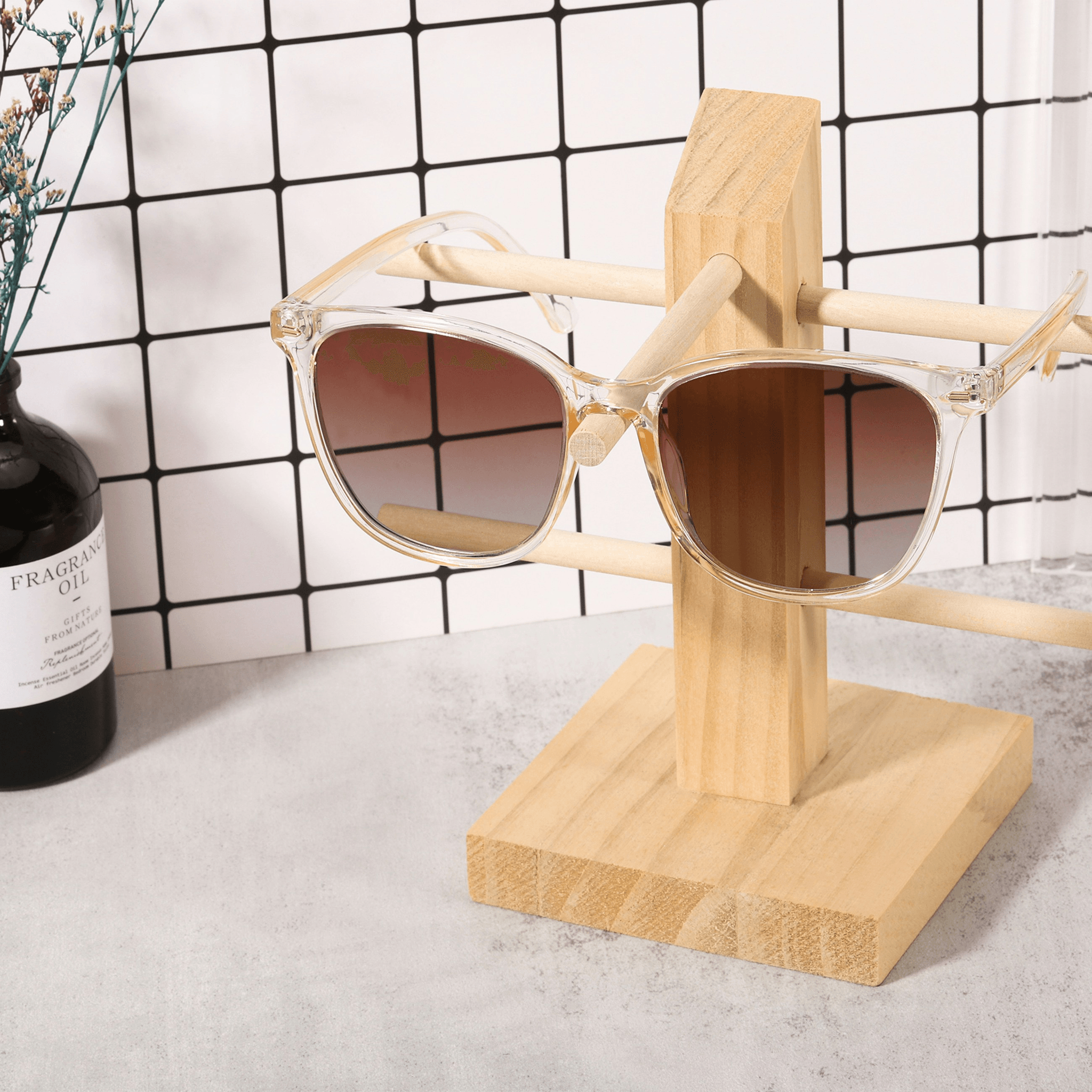Introduction

In the ever-evolving world of fashion, cellulose acetate eyewear has emerged as a popular choice for those seeking style and functionality. These unique frames are crafted from a bioplastic derived from natural sources, offering an eco-friendlier alternative to traditional plastic options. Understanding what cellulose acetate glasses are and their distinct advantages can help you make informed decisions about your eyewear.
Understanding Cellulose Acetate Eyewear
So, what are cellulose acetate glasses? Simply put, they are eyeglass frames made from cellulose acetate, a material that combines aesthetics with sustainability. This type of eyewear is not only lightweight but also highly customizable, making it a favorite among designers and wearers alike who appreciate both form and function.
The Benefits of Cellulose Acetate Frames
Absolutely! Cellulose acetate frames offer superior comfort due to their lightweight nature while providing vibrant color options that can be tailored to suit individual styles. Additionally, they are more resistant to impact than regular plastic, ensuring longevity in your eyewear collection.
How to Maintain Your Eyewear
Taking care of your cellulose acetate eyewear is essential for preserving its beauty and functionality over time. Regular cleaning with appropriate solutions will keep your frames looking fresh, while safe storage practices will help avoid scratches or damage when not in use. Moreover, being mindful of heat exposure is crucial—what are the disadvantages of cellulose acetate? Heat can warp these frames if left in direct sunlight or hot environments for extended periods.
What Are Cellulose Acetate Glasses?

Cellulose acetate glasses are a popular choice in the eyewear market, known for their unique properties and stylish designs. Made from a biodegradable material derived from wood pulp, these frames offer an eco-friendly alternative to traditional plastic eyewear. As consumers become more environmentally conscious, the demand for cellulose acetate eyewear continues to rise, prompting brands to explore innovative designs and sustainable practices.
Composition and Manufacturing Process
The composition of cellulose acetate glasses begins with cellulose, which is extracted from natural sources like cotton and wood. This cellulose is then chemically modified to create a thermoplastic material that can be molded into various shapes and colors. The manufacturing process involves melting the cellulose acetate pellets, which are then shaped into frames using advanced techniques that ensure durability while maintaining a lightweight feel.
One of the standout aspects of cellulose acetate frames is their ability to be produced in a wide array of colors and patterns. This versatility allows designers to create unique styles that appeal to diverse tastes. So when you ask yourself, Is cellulose acetate better than plastic? the answer often lies in its aesthetic variety as well as its environmental benefits.
Popular Brands Using Cellulose Acetate
Many well-known eyewear brands have embraced cellulose acetate frames due to their stylish appeal and sustainability factor. Brands like Ray-Ban, Persol, and Warby Parker frequently incorporate this material into their collections, showcasing its potential for high-quality design without compromising on ecological responsibility. If you're looking to buy rich acetate eyeglasses collection, these brands offer fantastic options that combine fashion with function.
However, it's essential to consider what are the disadvantages of cellulose acetate frames as well. While they provide significant advantages over traditional plastics in terms of aesthetics and sustainability, they may not always be as impact-resistant as some synthetic materials used in eyewear manufacturing.
Distinguishing Features of Cellulose Acetate
What sets cellulose acetate glasses apart from other types of eyewear is their distinct look and feel. These frames often exhibit vibrant colors with intricate patterns that can’t easily be replicated by standard plastic materials; this gives each pair a unique character that many wearers find appealing. Additionally, the lightweight nature of cellulose acetate ensures comfort during extended wear—perfect for those long days at work or play!
Another distinguishing feature is how well these frames can hold their shape over time compared to typical plastics; however, it’s important to note what are the disadvantages of cellulose acetate? They may require more careful handling since excessive heat or direct sunlight can cause warping or damage—something every owner should keep in mind when caring for their beloved eyewear.
Pros and Cons of Cellulose Acetate Frames

When considering eyewear options, cellulose acetate frames stand out for their unique qualities and aesthetic appeal. However, like any material, they come with their own set of advantages and disadvantages. Understanding these factors can help you make an informed decision about whether to invest in cellulose acetate eyewear.
Benefits Over Traditional Plastic
One of the primary reasons many opt for cellulose acetate glasses is that they offer significant benefits over traditional plastic frames. First and foremost, cellulose acetate is derived from natural sources such as wood pulp or cotton fibers, making it a more eco-friendly choice compared to petroleum-based plastics. Additionally, cellulose acetate frames are known for their vibrant colors and patterns that can be more striking than those found in conventional plastic options; they also tend to be lighter and more comfortable for prolonged wear.
Moreover, when asking Is cellulose acetate better than plastic?, the answer often lies in its durability and flexibility. Cellulose acetate frames resist shattering better than standard plastic frames, which means they are less likely to break upon impact. This resilience combined with the stylish designs available makes them a popular choice among fashion-conscious consumers looking for high-quality eyewear.
What Are the Disadvantages of Cellulose Acetate?
Despite their numerous advantages, it’s important to address What are the disadvantages of cellulose acetate frames? One significant drawback is that they can be sensitive to extreme temperatures; excessive heat can warp or damage the material over time. This sensitivity means that proper care is essential to maintain their integrity—something not everyone may consider when choosing eyewear.
Another disadvantage is that while cellulose acetate offers a wide range of styles and colors, it may not provide as much flexibility in terms of fit compared to other materials like metal or rubberized plastics. For individuals who require very specific adjustments for comfort or fitment issues, this could pose a challenge. Lastly, while these frames are generally durable, they may not have the same longevity as some high-end materials if subjected to rough handling.
Longevity and Wearability
When discussing longevity and wearability in relation to cellulose acetate eyewear, it's essential to highlight how maintenance plays a crucial role in extending their lifespan. With proper care—including regular cleaning with appropriate solutions—cellulose acetate frames can last several years without losing their charm or structural integrity. Unlike some plastics that become brittle over time, quality cellulose acetate maintains its flexibility if treated well.
However, potential buyers should also note that factors like exposure to harsh chemicals or neglecting storage guidelines can lead to quicker wear-and-tear on these stylish frames. Thus, understanding how best to care for your new pair becomes vital if you want them looking fresh season after season! Ultimately though—when cared for correctly—cellulose Acetate Frames offer both style and durability that's hard to beat!
Care Tips for Cellulose Acetate Eyewear

Taking care of your cellulose acetate eyewear is essential to ensure longevity and maintain their stylish appearance. While these frames are known for their durability, proper care can significantly enhance their lifespan and performance. Here are some practical tips to keep your cellulose acetate glasses looking fabulous.
Cleaning Techniques and Solutions
Use a microfiber cloth to gently wipe the lenses, avoiding any rough materials that might scratch them. For deeper cleaning, a mild soap solution mixed with lukewarm water works wonders; just make sure to rinse thoroughly and dry with a soft cloth afterward.
Avoid using harsh chemicals or household cleaners on your cellulose acetate frames, as they can damage the material over time. Instead, opt for specialized lens cleaners designed for eyewear; they help maintain clarity without compromising the quality of your frames. Remember, regular cleaning not only keeps your glasses looking sharp but also ensures optimal vision clarity.
Safe Storage Practices
Proper storage is crucial in prolonging the life of your cellulose acetate eyewear. Always store your glasses in a protective case when they’re not in use; this prevents scratches and accidental damage from falls or impacts. Additionally, consider keeping them away from other accessories to avoid any unwanted pressure that might warp or bend the frames.
When selecting a storage location, choose a cool and dry area away from direct sunlight or extreme temperatures—heat can compromise the integrity of cellulose acetate frames over time. If you’re traveling, don’t forget to pack them securely in a padded case to prevent any mishaps during transit; after all, you want those stylish frames safe and sound!
Avoiding Heat and Sun Damage
Cellulose acetate is more resilient than traditional plastic but still sensitive to heat—so keep those sunglasses out of hot cars or near heaters! Prolonged exposure can lead to warping or discoloration of your beloved eyewear; nobody wants that! If you're wondering what are the disadvantages of cellulose acetate? Well, heat sensitivity definitely ranks high on that list!
To protect against sun damage while wearing your cellulose acetate glasses outdoors, consider using UV-protective coatings on lenses if possible; this adds an extra layer of defense against harmful rays. Furthermore, be mindful of storing them in shaded areas when not being worn—this simple habit can go a long way in preserving both style and functionality!
Styling Your Cellulose Acetate Eyewear

Pairing Glasses with Outfits
Cellulose acetate glasses are versatile enough to complement both casual and formal attire. For a laid-back day, try pairing bold-colored frames with a simple white tee and denim jeans; this creates an effortlessly chic look that highlights the uniqueness of the cellulose acetate eyewear. On the other hand, for a more polished appearance, consider matching neutral-toned frames with tailored blazers or dresses—this juxtaposition enhances sophistication while showcasing your stylish eyewear.
Furthermore, don’t shy away from experimenting with patterns and textures in your clothing! Since cellulose acetate frames often come in vibrant colors and eye-catching designs, they can serve as statement pieces that elevate even the simplest outfits. When considering what to wear, think about how your cellulose acetate glasses can be an extension of your personal style rather than just an accessory.
Choosing Frames for Face Shapes
Finding the right cellulose acetate frames involves understanding how different shapes complement various face types. For instance, if you have a round face, opt for rectangular or angular frames that add definition and contrast to softer features; this will help elongate the appearance of your face. Conversely, those with square faces might want to choose round or oval-shaped lenses that soften their strong jawlines.
Additionally, heart-shaped faces often benefit from wider frames at the top that balance narrower foreheads; cat-eye styles are particularly flattering here! If you're wondering whether Is cellulose acetate better than plastic?—the answer lies in its ability to provide both style and comfort without sacrificing durability. The key is to experiment until you find what works best for you!
Accessories That Complement Your Look
Accessories play a pivotal role in enhancing your overall ensemble when wearing cellulose acetate eyewear. Opt for earrings or necklaces that echo colors found in your glasses; this creates harmony throughout your outfit while drawing attention back to those stunning frames! Scarves are another great accessory choice—consider tying one around your neck or letting it drape over shoulders for an added layer of flair.
Moreover, handbags can also tie together an outfit beautifully when they coordinate with either the color or style of your cellulose acetate glasses. If you're looking for something truly unique, explore Daposi's Buy Rich Acetate Eyeglasses Collection, which offers customizable options tailored specifically for fashion-forward individuals like yourself! Remember: accessorizing is all about balance—too many bold elements can overwhelm instead of enhance.
Why Choose Daposi for Eyewear

Customization Options Available
Daposi understands that individuality is key when it comes to eyewear, especially with cellulose acetate frames. They provide extensive customization options that allow customers to express their personal style while enjoying the benefits of cellulose acetate glasses. From choosing colors and patterns to selecting frame shapes, you can create a pair of glasses that truly reflects your personality.
Moreover, if you're wondering What are the disadvantages of cellulose acetate frames?—Daposi addresses these concerns by offering tailored solutions that enhance durability and comfort. Their focus on customization means you get not only stylish eyewear but also functional frames designed to meet your specific needs. So whether you want bold designs or subtle elegance, Daposi has got you covered.
Innovative Sustainable Practices
In today's world, sustainability is more important than ever, and Daposi takes this responsibility seriously with their innovative sustainable practices. They utilize eco-friendly materials in their production processes, ensuring that every pair of cellulose acetate eyewear contributes positively to the environment. This approach not only reduces waste but also sets a standard in the industry for responsible manufacturing.
Is cellulose acetate better than plastic? At Daposi, they believe it is due to its biodegradable nature and reduced environmental impact compared to traditional plastics. By choosing Daposi’s products, you're not just investing in stylish eyewear; you're also supporting sustainable practices that benefit our planet.
Buy Rich Acetate Eyeglasses Collection
If you're eager to elevate your eyewear game, look no further than Daposi's Rich Acetate Eyeglasses Collection! This stunning array showcases the versatility of cellulose acetate glasses with vibrant colors and intricate designs that cater to all tastes. Each piece is crafted with precision and care, ensuring longevity while making a bold fashion statement.
While exploring this collection, consider what are the disadvantages of cellulose acetate? Although it may be less flexible than some plastics, its unique aesthetic appeal far outweighs any minor downsides—especially when paired with Daposi's commitment to quality craftsmanship. So why wait? Dive into the world of rich acetate eyeglasses today!
Conclusion

In wrapping up our exploration of cellulose acetate eyewear, it’s clear that this material offers a unique blend of style, comfort, and sustainability. From understanding what cellulose acetate glasses are to weighing the pros and cons, we’ve delved into the intricacies of these fashionable frames. As you consider your options for eyewear, remember that making informed choices can enhance not only your look but also your environmental impact.
Key Takeaways on Eyewear Care
Caring for cellulose acetate frames is essential to prolong their lifespan and maintain their aesthetic appeal. Regular cleaning with gentle solutions ensures that dirt and smudges don’t diminish the beauty of your glasses. Additionally, safe storage practices and avoiding exposure to extreme heat or sunlight can prevent potential damage—after all, no one wants to deal with the disadvantages of cellulose acetate!
Making Informed Choices for Your Eyewear
When selecting eyewear, consider whether cellulose acetate is better than plastic for your needs—this material offers a lightweight feel and vibrant colors that traditional plastics often lack. However, it's important to weigh both sides: what are the disadvantages of cellulose acetate frames? Understanding these factors will help you make an educated decision about which type suits your lifestyle best. For those drawn to style and sustainability alike, exploring options like Daposi's rich acetate eyeglasses collection could be a game-changer.
Exploring the Future of Eyewear Design
The future of eyewear design is bright as brands continue to innovate with materials like cellulose acetate. With its eco-friendly properties and customizable features, it’s paving the way for stylish yet sustainable choices in optical fashion. As we look ahead, keep an eye on how companies like Daposi are bringing visions to life through unique designs that reflect individuality while respecting our planet.
